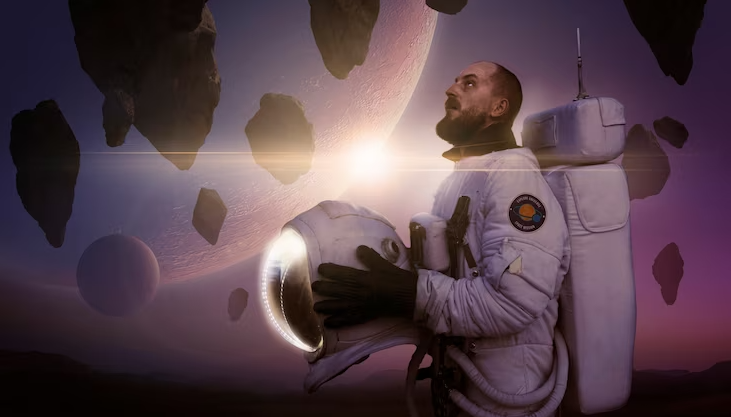
The field of aerospace has witnessed remarkable advancements over the years, propelling the exploration of space to new heights. In this article, we will delve into the fascinating world of space exploration and discuss the latest developments in the aerospace industry. From cutting-edge spacecraft technologies to ambitious missions and the emergence of new players, we will explore the exciting future of space exploration.
Advancements in Spacecraft Technology
The aerospace industry has experienced groundbreaking advancements in spacecraft technology, revolutionizing our ability to explore space. The advent of reusable rockets has been a game-changer, spearheaded by companies like SpaceX. The ability to land and reuse rocket boosters significantly reduces the cost of space missions and makes space travel more economically viable. SpaceX’s Falcon 9 rocket, with its reusable first stage, has demonstrated the potential of this technology.
Furthermore, propulsion systems have seen significant improvements, enabling faster and more efficient space travel. Electric propulsion systems, such as ion thrusters, offer higher fuel efficiency and longer operational lifetimes compared to traditional chemical propulsion. These systems allow spacecraft to travel greater distances, explore more celestial bodies, and undertake ambitious missions to Mars, the Moon, and beyond. Advancements in spacecraft technology are paving the way for a new era of space exploration.
Mars Exploration and the Search for Life
Mars has long captivated the imagination of scientists and space enthusiasts as a potential site for extraterrestrial life. Multiple space agencies, including NASA and the European Space Agency (ESA), have launched missions to explore the red planet. The Mars Perseverance Rover, launched by NASA, is equipped with sophisticated instruments to search for signs of past microbial life. Its mission includes collecting rock samples that will be returned to Earth for further analysis.
Private companies like SpaceX are also actively working towards Mars exploration. SpaceX’s CEO, Elon Musk, has outlined ambitious plans for colonizing Mars, with the goal of establishing a self-sustaining human presence on the planet. The company’s Starship spacecraft, currently under development, aims to carry a significant number of passengers to Mars and pave the way for future human colonization efforts. These initiatives not only advance our understanding of Mars but also lay the groundwork for potential human habitation and interplanetary exploration.
Commercial Space Tourism
In recent years, the aerospace industry has witnessed a surge in commercial space tourism. Companies like Virgin Galactic and Blue Origin are developing spacecraft specifically designed to offer suborbital flights to tourists. These flights provide individuals with a unique opportunity to experience the wonder of space, observe the Earth from a different perspective, and float in microgravity.
While suborbital tourism is still in its early stages, it holds immense potential for the future. As the industry continues to mature and technology advances, we can expect the emergence of orbital tourism, where individuals can spend extended periods in space, orbiting the Earth and experiencing life as an astronaut. The prospect of space tourism not only opens up new avenues for exploration but also has the potential to inspire a new generation of space enthusiasts and foster international cooperation in space ventures.
Lunar Exploration and Sustainable Missions
The Moon, our closest celestial neighbor, has regained prominence in space exploration efforts. NASA’s Artemis program aims to return astronauts to the lunar surface by 2024, with a focus on establishing a sustainable presence on the Moon. The Artemis Base Camp, a planned lunar outpost, will serve as a gateway for future deep space missions, including crewed missions to Mars.
Private companies like SpaceX and Blue Origin are also making significant contributions to lunar exploration. SpaceX’s Starship spacecraft, in collaboration with NASA, is being designed to transport cargo and potentially humans to the Moon. Blue Origin’s Blue Moon lander aims to enable the delivery of payloads, including scientific instruments, to the lunar surface. These combined efforts by government agencies and private companies are driving innovation, accelerating lunar exploration, and paving the way for future human missions to the Moon.
Space Telescopes and Observatories
Space telescopes and observatories play a crucial role in expanding our understanding of the universe. The Hubble Space Telescope, launched by NASA in 1990, has revolutionized astronomy with its breathtaking images and groundbreaking discoveries. It has provided valuable insights into the formation of galaxies, the existence of black holes, and the age of the universe.
The upcoming launch of the James Webb Space Telescope (JWST) is highly anticipated. It will be the most powerful space telescope ever built and is poised to revolutionize our understanding of the cosmos. Equipped with advanced instruments, the JWST will study the formation of stars and planetary systems, observe distant galaxies, and search for potential signs of habitable exoplanets. The data and images captured by the JWST are expected to redefine our understanding of the universe and ignite new avenues of scientific research.
Conclusion
The aerospace industry continues to push the boundaries of space exploration with remarkable advancements and ambitious missions. From advancements in spacecraft technology to the pursuit of Mars and lunar exploration, the industry is propelling us towards a future where space travel and colonization become a reality. Commercial space tourism is on the rise, offering individuals the opportunity to experience the wonders of space firsthand.
Furthermore, space telescopes and observatories are expanding our understanding of the universe, revealing its beauty and mysteries. As we look to the future, the aerospace industry will play a crucial role in unraveling the secrets of space, advancing technology, and inspiring generations to dream big. With continued innovation and collaboration between government agencies, private companies, and international partners, we can expect even more exciting developments in the aerospace industry. The quest for knowledge and exploration will drive us to reach new frontiers and expand the boundaries of human achievement in space.